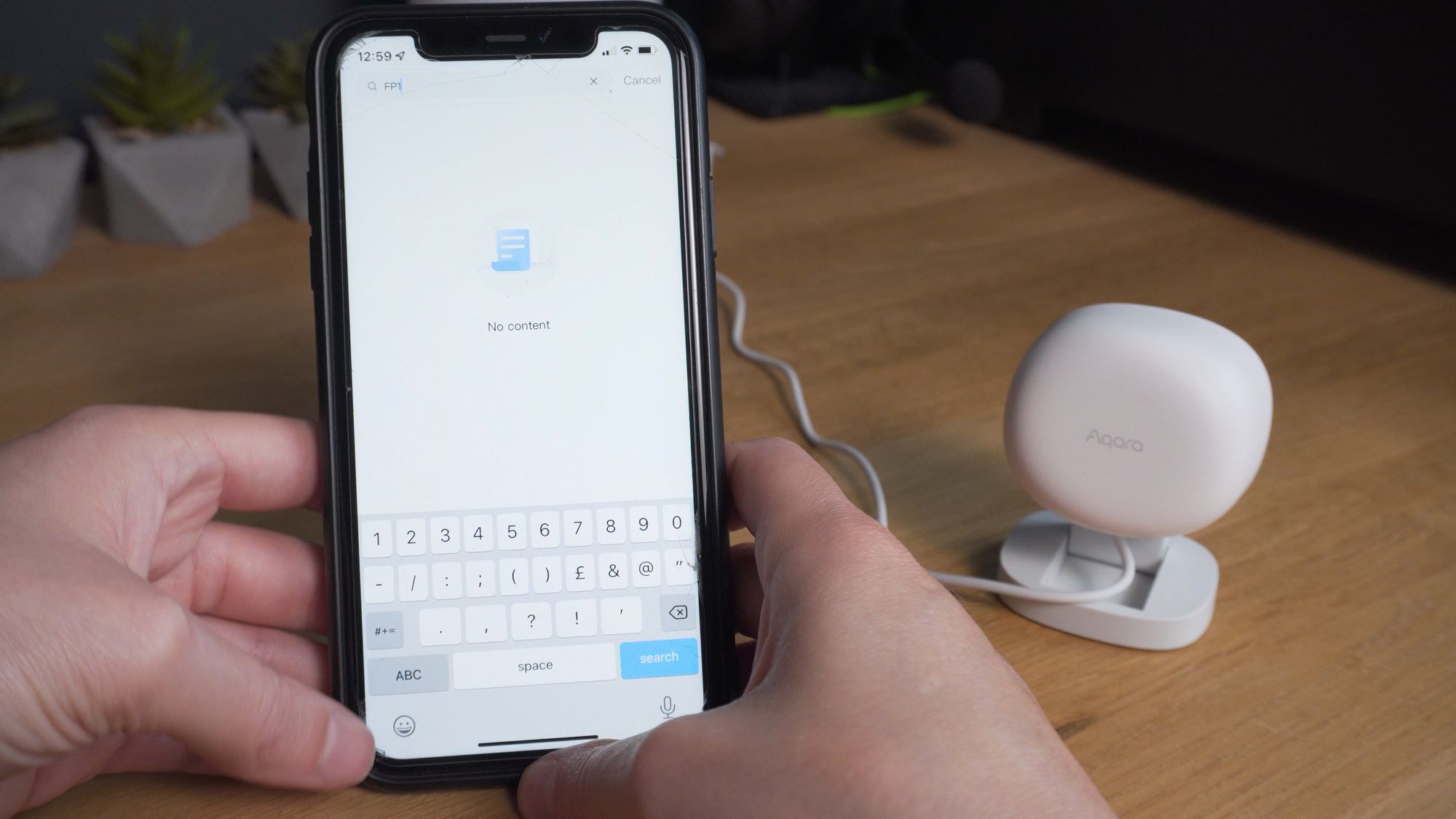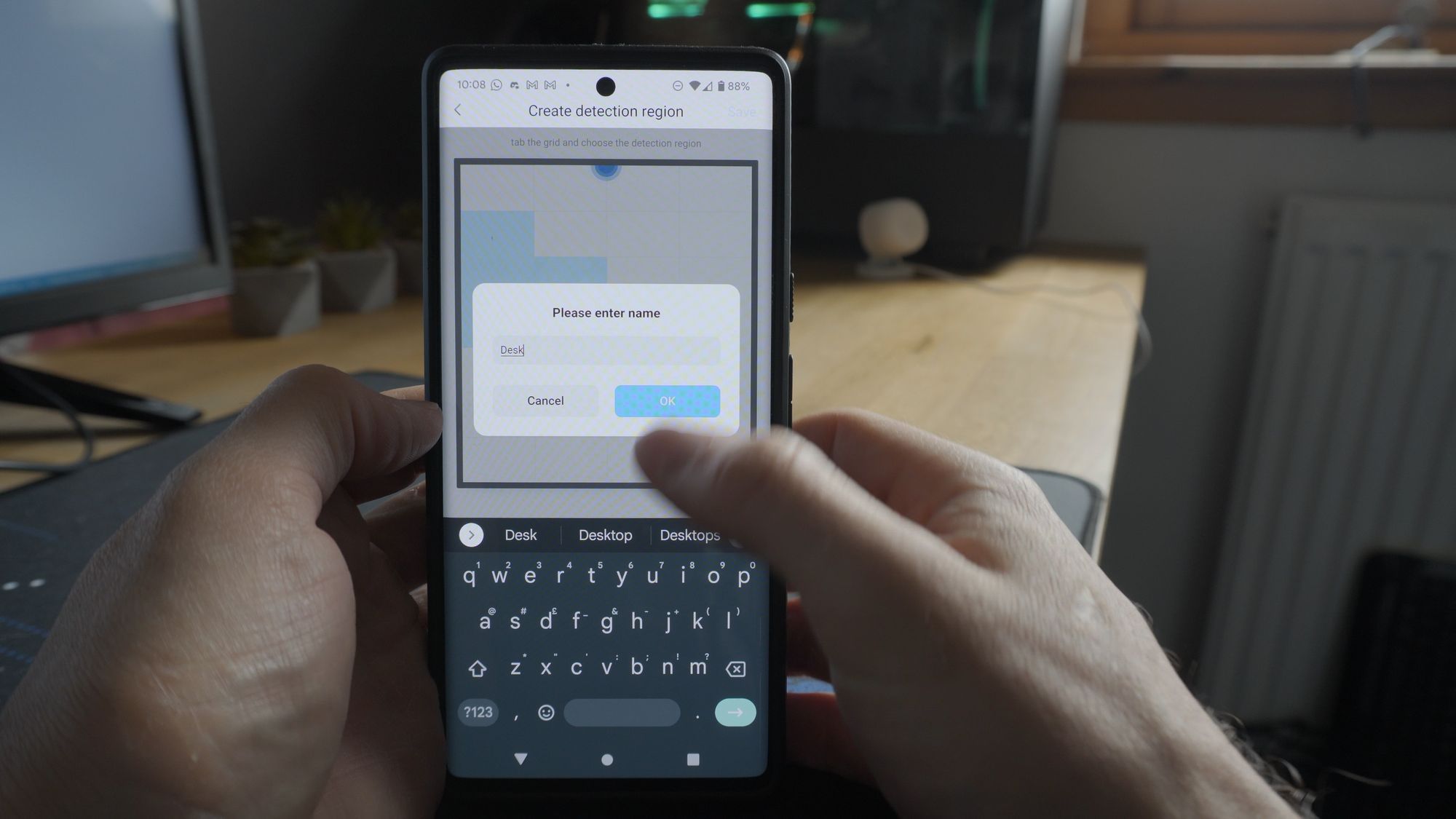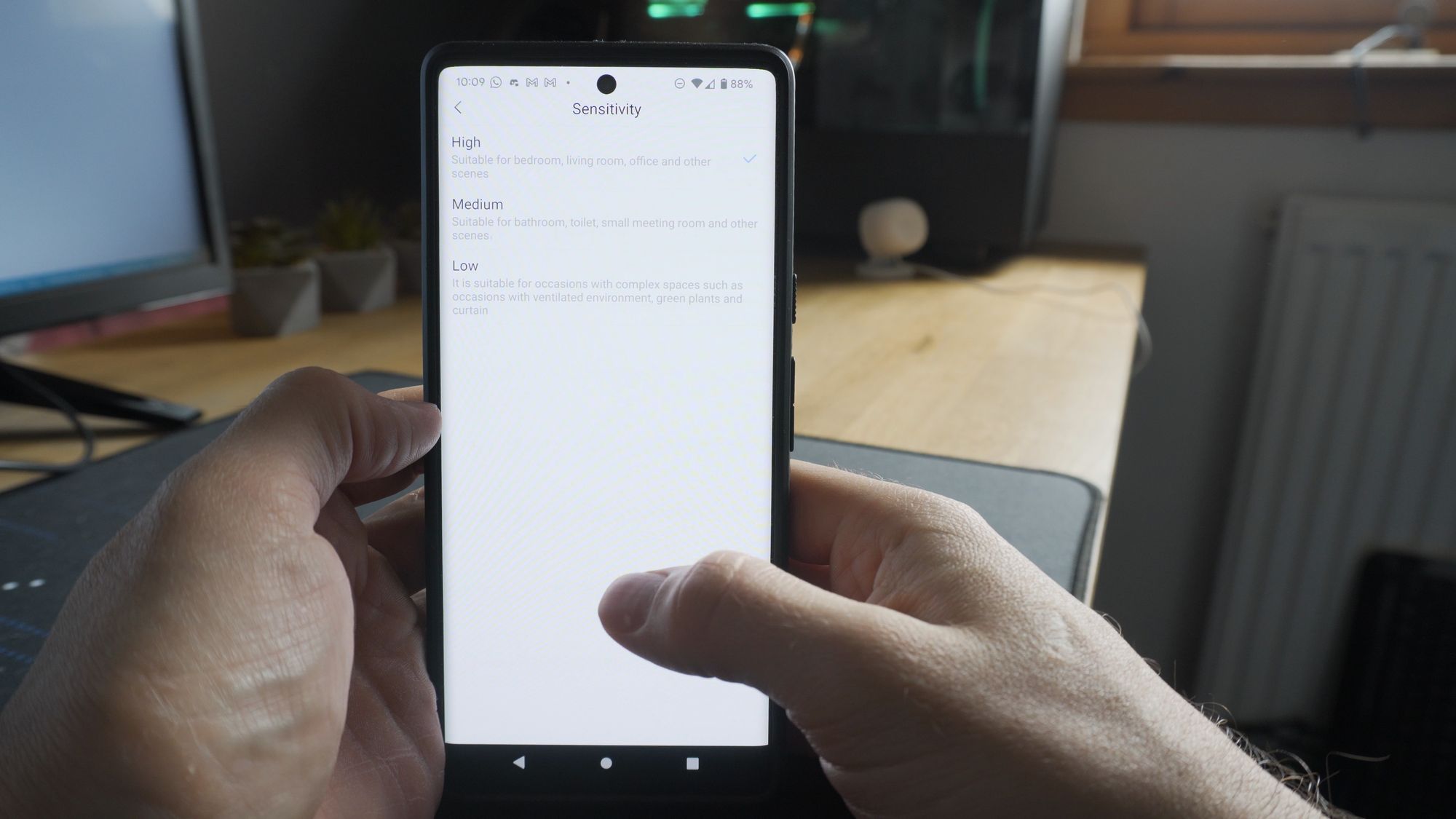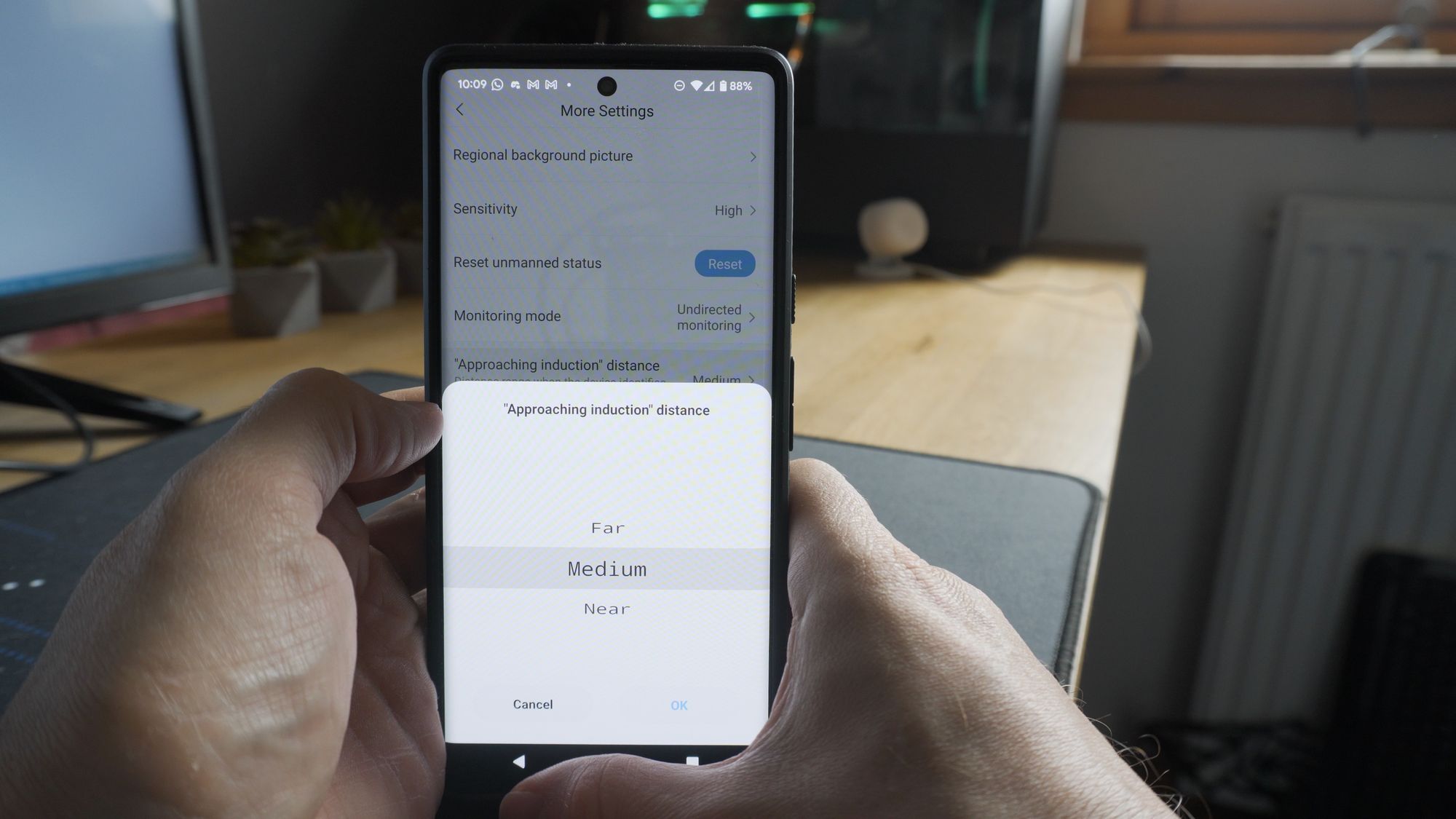The Aqara FP1 Changes The Way We Automate Our Smart Homes
The Aqara FP1 is a millimeter wave radar sensor that can accurately and reliably detect the presence of a person in a room and can help supercharge your automations!

I honestly think this new sensor is an absolute game changer for your Smart Home because it finally solves a problem that most of us have had for a long time: accurate and reliable room presence without having to carry any extra devices with you at all times!
It can also detect which direction you are walking, has different levels of sensitivity and even supports regions for very granular visibility!
I think this is one of the best pieces of Smart Home tech to come out in a while... let's take a look!
Video
Aqara FP1
So this is the Aqara FP1 - a sensor designed specifically for room presence detection.
You may confuse this with a regular motion sensor, which Aqara (as well as a bunch of others) also make - these are great for detecting someone walking into a room.
However, if you are sitting relatively still inside that room, maybe at a desk or watching TV where there is very little to no motion happening. This means that motion sensors won’t be able to detect you inside the room and this causes a knock on effect where if you want to turn your lights and devices off when a room isn’t occupied, motion sensors aren’t often reliable enough to do that.
Or maybe you're sitting still at your desk getting some work done and your lights turns off because the motion sensors don't pick you up... that’s where the FP1 comes in!

The FP1 uses a millimetre wave (mmWave) radar to accurately detect the presence of a person in a room - even if you are completely still for hours on end - allowing you to rely on it for your room based automations.
It connects via Zigbee (haven't been able to confirm Zigbee 3.0), and is powered via a USB charger. It has a 120 degree field of view with a 5m detection distance.
Not only can it detect if someone is in the room or not, even when they are sitting completely still, if you do start moving, it is also able to detect which direction you are moving in - left to right or right to left. Plus, it can also detect if you are approaching the sensor or walking away from it, which opens up a good amount of potential when it comes to automations.


When you are placing this sensor, it does have a quoted range of 5m, so you’ll need to make sure to choose your location accordingly.
It does have a magnet and also a swivel base allowing you to mount on a desk, table, on the wall or roof if you want to and have it angled down like a regular motion sensor.


Smart Home Platforms
Let’s first get into about what you get when connecting it to various Smart Home Platforms and then we can get on about the performance and some potential problems.
Aqara App
So, firstly, I connected this to the Aqara app just to see what the behaviour was like - I wanted to see how it was the way that Aqara intended it with all of its features.
This is where I came into my first problem and that was that the FP1 doesn’t show up as a product to be able to add inside of the Aqara Home App.
This is because it is not sold in this part of the world yet - which I'll cover shortly - but all I had to do was change my region to China Mainland and then it becomes available to add as a product.
Pairing it is really easy, you just select it from the list and then hit the pair button on the FP1 for 5 seconds and it will connect right up.




Once you have it connected (and the one thing that did surprise me) the first thing you really see is a little map that indicates where you are relative to the position of the sensor, which is pretty useful for choosing the optimal position in a room.

You’ll also notice that you get this region button. What this does is allow you to configure different regions in a room, which in turn can then be used in automations, which is actually really cool, so you could have different things happen depending which part of the room you are in.





Other settings in the Aqara app include motion sensitivity, the mode and the approaching distance so that you can tailor it to your specific rooms.




Apart from that, it pretty much acts like a regular motion sensor does and will show if someone is detected or not.
Homekit
If you are a Apple Homekit user, the FP1 does work with Homekit when connected to the Aqara Hub M2 and will show up as an occupancy sensor for you to use.
However, I couldn’t see a way to adjust any of the settings such as sensitivity through Homekit, but since you would need the Aqara Hub M2 anyway, you could easily change the settings through the Aqara app.


Home Assistant
The FP1 also does work through Home Assistant using Zigbee2MQTT which already has support.
ZHA users: unfortunately this doesn’t work yet, it does pair but it just shows up as a really basic device with none of the sensors or settings showing so hopefully we can get this added to ZHA really soon! You can track the progress of that here.
When connecting this to Zigbee2MQTT, you do get access to all of the sensors and settings but you cannot access the regions as they have not yet been added. So you are able to see the presence detection, the presence event so if you're walking left to right or arriving or leaving, as well as change the monitoring mode, approach distance and sensitivity.
Interestingly, there is also a temperature sensor built in too (which doesn't show in the Aqara app), which does seem to be pretty accurate when compared with my other dedicated temperature sensors.





Performance
But how well does the FP1 perform? We all know that presence detection is really hard to do well and I’m not going to lie, I went into this with, shall we say, mediocre expectations but the FP1 blew those out of the water and performed much higher than I ever expected it too.

I placed the sensor in our living room as that is typically where we have problems with motion sensors because we are watching TV and so not much movement involved there. It means its also where I have to have the timeout for lights set much higher otherwise they will continuously turn off all the time when we are in the room.
I placed the FP1 over in the corner, and I set the timeout for my lights down to 1 minute, meaning that if the FP1 detected no one was in the room for 60 seconds, all of the lights would turn off immediately.
To my surprise, it never triggered falsely even once. I could have easily set this down to 1 second and it still would have never turned off when we were in the room - it really was that good at detection!
We sat in the room for around 2 or 3 hours at a time and not once did it falsely think we had left. Then, when we did both get up and leave for a minute, it would recognise that right away and turn the lights off.
Detection Speed
When you exist a room, the FP1 takes around 10 seconds for it to change from occupied to not occupied - that is plenty fast enough for leaving a room.
However, entering a room is a different story. I will straight up tell you that these just aren’t quick enough to be used for entering a room - they take roughly about 5 seconds to detect when a person is in the room which is obviously nowhere near fast enough to be used for turning lights on.
I think that’s because it's doing some sort of local processing to accurately determine if it is a person or not and while it obviously it does that very well, clearly the speed is a trade off.
I’d probably recommend pairing these with a motion sensor to have your lights turn on when triggered by the motion sensor so it’s as fast as possible, but have the FP1 turn them off when the room is unoccupied.

I also left this plugged in on my bedside table overnight as that is a really good test... and sure enough it was completely accurate with no false readings - I was pretty stunned at the performance! I at least expected to get one or two blips, but to get zero…I was pretty shocked!


The beauty of this sensor is that unlike other methods of doing presence detection like Bluetooth tracking, you don’t have to have another device or sensor on you at all times to make it work, and you also don’t have any privacy problems like you would if you were to use a camera based solution. Always a bonus!
Minor Problems
No device is perfect - let's talk about some of the more minor problems with this sensor.
Availability
Firstly its availability - so funny story, I tried multiple times to convince Aqara to send me an FP1 and they would not do it because its not currently available for sale anywhere outside of China, so I ended up buying this unit from Aliexpress.
I asked Aqara why it isn't for sale over here yet and they mentioned that they are still evaluating whether or not to sell these outside of China and whether there is going to be a market for them.
I’m pretty positive Aqara is going to be closely monitoring this since I "acquired" an FP1, so if you want Aqara to sell these sensors outside of China, then let them know there is definitely a market!
Hopefully, the more people that bombard them will make them realise that people do want them!
If you want to buy one of these then you’ll need to try and find one on Aliexpress. They seem to sell out incredibly quickly when you do find them and then they disappear for a while. I genuinely wish I’d bought more than 1 when I had the chance, because right now they are completely sold out.
Power
The second problem is power - unfortunately the FP1 is not battery powered which I understand as it’s probably continuously scanning which would use a lot of power.
But that’s not my main problem: firstly the FP1 doesn’t act as a Zigbee router to improve your Zigbee mesh, which I find a little lazy considering this is plugged into power permanently so I would have liked to have seen that.
Secondly, the USB cable is hard wired in so you are kinda stuck with the cable length they give you, which if you want to mount on the roof might not be long enough.
The cable also kind of gets in the way sometimes when you rotate it, and if you put the cable towards the top then that means the Aqara logo is upside down, and my OCD just can’t handle that.

I also pointed out earlier about the detection time being slower than a regular motion sensor and since this is wired and not battery powered, it would have been really cool if they included a regular motion sensor in here too combined with the millimetre wave so that way you could have had the best of both worlds in this one sensor... that would have been amazing.
Multiple people
I’ll also mention that its unable to detect how many people are in a room but rather just if someone is in a room.
It had no problem with both of us sitting on the sofa, and me walking out and you would get an event saying that someone was leaving, but it would still continue to detect Sarah was sitting in the room even if she hadn’t moved - so great for letting you know someone is there, but not how many.
Again, mounting position and distance is something to be aware of, because of the 5m detection zone, that does mean that depending on your room size you might need to be careful about the placement.
Price
Finally price is a bit of an issue. Obviously I don’t know the final price since this isn’t even available outside of China, but I paid £78 for this - some of that was shipping so it was around £65 for the sensor itself.

If you have quite a few rooms then that could certainly get very costly very quickly!
For our house alone, which isn’t that big, I’d need around 10 of these, which would be around £650 which is very steep!
But then I got thinking about it some more and I thought, actually maybe its not as big an issue as you would originally think - see, you probably only want these for rooms that are low movement rooms, for example in your living room or office where you tend to sit still a lot more.
You probably don’t really need these in your hallway, garage or kitchen, where you tend to walk around more and that probably brings the amount you would need down quite significantly. Then I realised that for this house I’d probably want 2, 3 maybe 4 sensors max which would bring my cost down drastically.
So yes, these are expensive but hopefully this will improve as time goes on and as we see maybe a second generation of this device.
Overall Thoughts
While there are a couple of things that make these FP1's not quite perfect, I genuinely think this is one of the most impressive sensors I’ve seen and as weird as this sounds, this is one of the first bits of Smart Home Tech that I have seen in a long while that I was genuinely excited about. Especially when I opened the box and started using it - I was really impressed by how well this sensor works!
I’m also excited for other people to start getting these too as I do think these are such a game changer for the Smart Home and it opens up some really great possibilities, despite some of the minor short comings.
Final Words
So there we are! Here is (possibly) your first look at this much anticipated sensor from Aqara. I know many of you have been desperate to get your hands on one of these and I know availability sucks, but hopefully we can convince Aqara that we need these sensors. Do let me know if you manage to get your hands on some and what you think of them!
